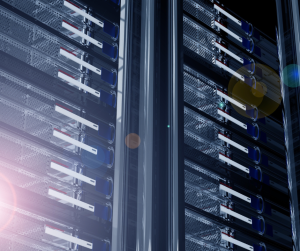Step into the heart of modern technology – the datacenter. A mystical fortress where information flows like a digital river, guarded by layers of security akin to a high-tech moat protecting valuable treasures. Have you ever wondered how your data remains secure within these technological sanctuaries? Join us on an eye-opening journey as we unveil the intricate mechanisms that ensure the safety and integrity of your digital footprint. As the digital world expands exponentially, the importance of data security within datacenters cannot be overstated.
Behind the scenes, a symphony of protocols, firewalls, and encryption techniques work tirelessly to fortify this fortress of information, ensuring that your data remains under lock and key. In this blog post, we delve deep into the realm of datacenters, exploring the inner workings that safeguard your precious information from prying eyes and malicious intent.
The Evolution of Datacenters: From Humble Beginnings to Technological Marvels
Datacenters have come a long way since their humble beginnings. In the early days, datacenters were simply rooms filled with rows of servers, connected by a network of cables. These servers were responsible for storing and processing data, serving as the backbone of the digital world. However, as technology advanced and the demand for data storage and processing power increased, datacenters evolved into technological marvels.
Today’s datacenters are massive facilities that house thousands, if not millions, of servers. They are equipped with state-of-the-art cooling systems to prevent overheating and ensure optimal performance. These facilities are also designed to be highly energy-efficient, utilizing advanced power management techniques to minimize energy consumption.
Furthermore, modern datacenters are built with scalability in mind. They are designed to accommodate the ever-growing demand for storage and processing power. This scalability is achieved through modular designs and virtualization technologies that allow for easy expansion without disrupting operations.
In addition to physical infrastructure improvements, datacenter management has also evolved significantly. The introduction of cloud computing has revolutionized the way data is stored and accessed. Cloud-based datacenters offer greater flexibility and accessibility compared to traditional on-premises solutions.
Virtual Fortresses: Understanding Network Security in Datacenters
Network security is a top priority in any datacenter environment. With cyber threats becoming increasingly sophisticated, it is crucial to implement robust security measures to protect sensitive information.
Datacenter network security starts with perimeter defenses such as firewalls and intrusion detection systems (IDS). These technologies monitor incoming and outgoing network traffic, filtering out malicious packets and preventing unauthorized access.
Within the datacenter itself, segmentation plays a vital role in enhancing security. By dividing the network into separate segments, each with its own set of access controls, the risk of lateral movement by attackers is minimized. This segmentation also allows for easier monitoring and containment in the event of a security breach.
Encryption is another essential component of datacenter network security. By encrypting data both at rest and in transit, sensitive information remains protected even if it falls into the wrong hands. Advanced encryption algorithms and protocols ensure that only authorized parties can access and decipher encrypted data.
Redundancy and Backup Systems: Ensuring Continuous Data Availability
Data availability is crucial for businesses and individuals alike. Downtime can result in significant financial losses and damage to reputation. To mitigate this risk, datacenters employ redundancy and backup systems.
Redundancy refers to the duplication of critical components within a datacenter infrastructure. This includes redundant power supplies, network connections, and storage devices. In the event of a hardware failure or other disruptions, redundant systems seamlessly take over to ensure uninterrupted operations.
Backup systems are equally important for data availability. Regular backups are performed to create copies of important data that can be restored in case of accidental deletion, corruption, or other data loss incidents. These backups are typically stored offsite or in separate physical locations to protect against disasters such as fires or floods.
Disaster Recovery Planning: Preparing for the Worst-Case Scenarios
No matter how robust the security measures or redundant the systems, disasters can still occur. Datacenters must have comprehensive disaster recovery plans in place to minimize downtime and ensure business continuity.
A disaster recovery plan outlines procedures for responding to various types of disruptions, including natural disasters, cyber attacks, or equipment failures. It includes strategies for backup restoration, system recovery, and communication with stakeholders.
Datacenters often conduct regular disaster recovery drills to test the effectiveness of their plans and identify areas for improvement. These drills simulate different disaster scenarios and allow teams to practice their response and recovery procedures.
Conclusion: Safeguarding Your Digital Footprint – A Collective Effort
The security and availability of your data within datacenters are a collective effort. Datacenter operators invest heavily in infrastructure, security measures, and disaster recovery planning to protect your digital footprint. However, as users, we also have a role to play in ensuring the security of our data.
Practicing good cybersecurity hygiene, such as using strong passwords, enabling two-factor authentication, and regularly updating software, can go a long way in safeguarding our digital presence. By working together with datacenter operators and adopting best practices, we can create a safer online environment for everyone.
Datacenters have evolved from simple server rooms to complex technological marvels. They employ advanced network security measures, redundancy systems, and disaster recovery plans to ensure the safety and availability of our data. As technology continues to advance, so too will the capabilities of datacenters in protecting our digital footprints.
TurnKey Hosting offers diverse web hosting services, including cPanel, cloud, dedicated servers, and VPS, all backed by cutting-edge datacenter technology. We provide secure, scalable, and customizable hosting solutions for any online need.

